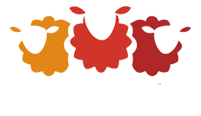Author- Ms. Sonica Aron, Founder and Managing Partner, Marching Sheep
“We are in the 21st century, are we still talking about gender diversity?” or “When we talk about diversity, why is the focus only on women?” or “We have been hearing about gender diversity for so long….how much longer will it take to reach success and when will we start focusing on other dimensions?”
These are some very relevant and valid questions today’s woke and updated workforce is asking. Come the 8th of March every year, just about every organization, across industries, big or small, makes a splash on social media. Pictures of International Day celebrations in the form of capability-building sessions, Motivational talks from celebrities to pictures of gift hampers. The way organizations celebrate differs, but they do. Each year the theme is different, from Choose to Challenge to Break the Bias to this year- Embrace Equity. Interestingly there were pictures of many leaders in the embrace Equity pose splashed across social media during the month of March.
The question that begs an answer is- Do managers across organizations know what ‘Equity’ means? Because if they don’t, how will they embrace it? An employee experiences an organization through the manager and peers. It is the managers and Leaders who are the true champions of building an inclusive culture in teams, who can give a sense of belonging to every team member, and provide psychological safety that irrespective of gender, age, race, religion, or caste they can bring their authentic selves to work, and they will be valued for their contributions. If managers are not enabled, empowered, and sensitized to build an inclusive team culture, how will they embrace equity and how will then, the entire organization, and the society at large embrace equity?
And next year, we will be celebrating yet another theme, and the questions raised at the beginning of the article will remain unanswered. What we need is intent and consistency in driving this agenda of inclusion and broadening the narrative.
Inclusion stands on the basic tenets of respect for differences, of being able to see different perspectives, of not being rigid, and of being able to amicably coexist and even thrive. When one speaks about women employees, the tendency is to brush them all into one bucket. However, every women employee is different- they have different educational backgrounds, they would have different life stages, ages or generations, sexual orientations, different aspirations, different ways of working, different communication styles, different personalities, and so on. Every woman in the organization would be unique. Here one can see the intersectionality of gender diversity with generational diversity and sexual orientation diversity. These dimensions are more commonly spoken about today, but other invisible dimensions like aspirations, and personality type are also dimensions of diversity and have an impact on inclusion initiatives.
Today, focusing DEIB efforts on one dimension of diversity will not yield results because individuals in the workforce are keenly aware of their intersectional identities and needs. And hence for organizations to take a multi-pronged, consistent, and continuous approach will yield results. If we truly want to unleash the power of a diverse workforce, we need to break the labels and barriers ourselves and start looking at the ‘needs’ of employees- learning needs, growth needs, leave benefits, medical benefits, and so on and not by gender, or age, or sexual orientation or gender identity or disability. For example, if a company has a childbearing age group workforce, then a comprehensive parental policy needs to be worked on that enables the employees to be productive and feel supported at the same time. If an organization is looking for an insurance partner- look for a partner that covers same-sex partners too. Relook at relocation policy and look at the evolving family structure today. Is your relocation policy addressing the needs of employees of today?
And while the inclusion of women in the workforce is critical, remember that women can be from Generation Z, Y, or X, they might be Cisgender heterosexual or part of the LGBTQIA community, might be able-bodied or might have a disability, they can be from any region, culture or ethnicity. It’s time we broadened the narrative around diversity and enabled our managers to truly embrace equity. Because as “Diversity is a fact, Inclusion is a choice, Equity is action and Belongingness is an outcome of these three.”

